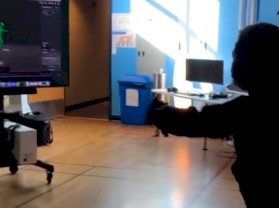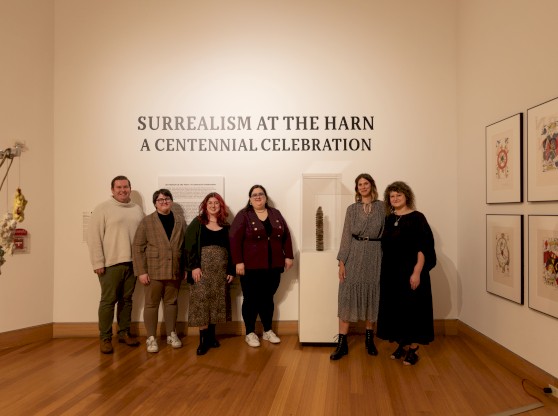Dr. Susan Milbrath is one of the program founders of the UF Museum Studies Program. She is Curator Emeritus at the Florida Museum of Natural History, Latin American Art and Archaeology.
Chandler: How did you become involved with the founding of the Museum Studies Program?
Susan: When I was first hired at UF as a curator, I was doing this major exhibit, called First Encounters, that was funded by NEH, and then I realized that I needed to teach because I was part of a university system. So I started working through an existing course in the fall of 1990, which was History, Philosophy, and Purposes of Museums (H6084) taught through the History Department and then the course was cross-listed with Art History, which had separate courses (ARH 4030 and ARH 6938). We combined our courses and that is how I became involved with this program. The ARH courses were originally taught by the director of the University Gallery, but then Robin Poynor took over the course, and he and I started teaching together. We both had other research interests as well, and we wanted to teach in our area of research. He was a specialist in African art, and I was focusing on Pre-Colombian studies, so we thought a new program should be developed, especially because we have all these museums on campus. Robin took the lead on finding out how to create a new program, and I joined the Committee for a Feasibility Study he established for museums, which eventually became the Committee to Develop a MA in museology. By that time, we were getting paperwork from Tallahassee on how to establish a new program, because there were certain rules and we decided to make it something that would be appealing to people in not only in art history, but history and anthropology. Even after the program was approved and a director was hired, I kept the museum studies connection by supervising students who would do exhibit projects.
Chandler: Tell me about your background. How did you use it to help found the Museum Studies Program?
Susan: Initially, I was simply trained as an art historian. But when I took a job doing a major exhibit on my area of research, which was ancient astronomy in the new world which opened at the American Museum of Natural History in 1982. For “Star Gods of the Ancient Americas” we used the collections now housed at the National Museum of the American Indian. That was my first exhibit, so I was able to learn by doing the exhibit under the guidance the professional museum staff. Then that exhibit helped me get hired when there was a position open at the Florida Museum for a big exhibit they wanted to develop, called “First Encounters: Spanish Explorations in the Caribbean and Southeastern United States, 1492-1570.” So I was already doing exhibits without ever having any formal museum studies training, but you do learn on the job!
Chandler: As a new program at UF, what were those first initial years in the program as a faculty member like?
Susan: UF almost immediately hired Glenn, and we had some students already taking courses and were interested in the program. So we were able to segue into the program with students we already had and those brought in by Glenn. So the early experience was for me very fluid because I simply sent students to the program, and I continued to supervise them, and then gradually they were taken into the program.
Chandler: 2020 is the year of the woman. What was it like working as a woman in the growing and changing museum fields?
Susan: Well, I think museums are pretty friendly towards women. I mean, there's a tradition of art history being dominated by women, not that we always get the top positions. When I went to Columbia University, I never felt any discrimination in that program whatsoever. Whereas, I think the anthropology people did feel that women had to act a certain way to get respect from fellow anthropologists. I think that we need more female museum directors. That’s kind one of the glass ceilings I see that tends to be dominated by men, whereas many of the nuts and bolts jobs are done by women.
Chandler: What made you want to work in the museum field? What sparked your interest?
Susan: I like being able to translate what are complex ideas to a level where the general public can access the material, and it seemed to me that the Museum Studies Program is ideal for teaching people how to do that. You can also learn by doing, and I think that's where I've ended up teaching myself. My research is in a complex field called archaeoastronomy, and to understand that field presumes that people have some understanding of astronomy, but they also have to understand the context of culture, history, background. Making that field something that people will enjoy reading about or at least seeing the objects that illustrate certain points was a goal in my first exhibit, and similar goals developed in later exhibits.
Chandler: What do you think is the importance of Museum Studies Program in this country today?
Susan: We need to train people because I think people, particularly the older generation, like to take the younger generation to museums, especially to natural history museums. Also, I find that college-aged students are really enjoying art museums because it's almost like a social event. You get to know somebody that way and it's a social situation that involves scientific knowledge or material culture, and it helps bring us together.
Chandler: Do you have any final thoughts or comments?
Susan: I'm very happy to see the program thriving and am impressed by the number of students the program has produced.



